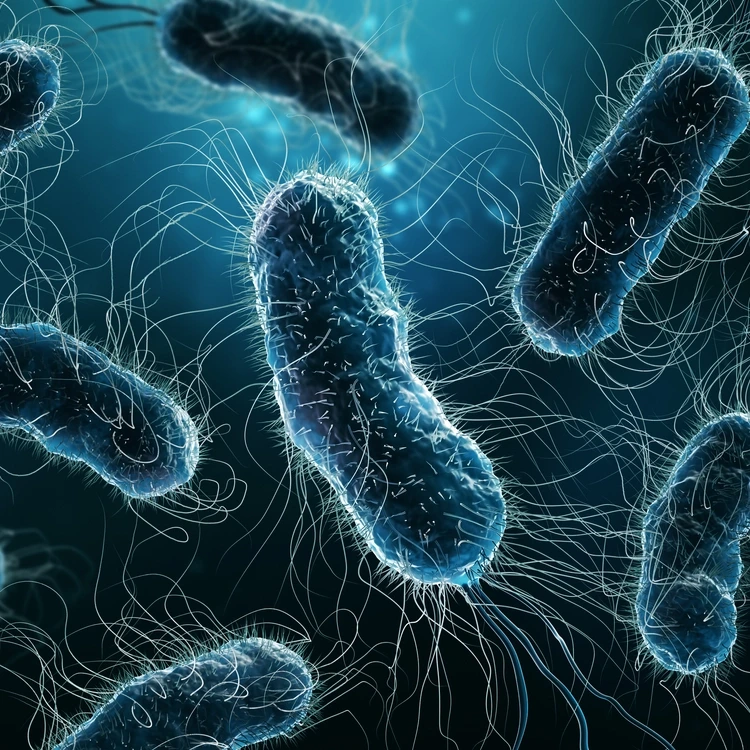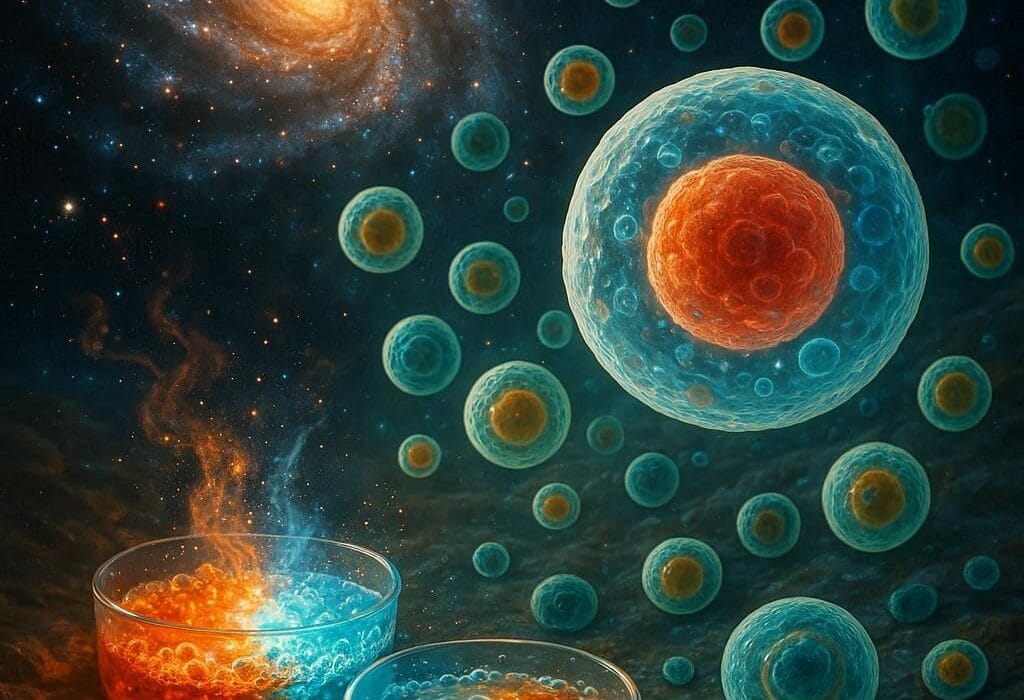Deep within every human being exists an invisible world more ancient and complex than anything we can imagine—a vast ecosystem of microscopic organisms that coexist with us, shape our biology, and even influence our thoughts and behavior. This hidden world is composed of trillions of microbes—bacteria, viruses, fungi, archaea, and protozoa—that live on and inside the human body. Collectively, these organisms are known as the human microbiota, and their combined genetic material is referred to as the microbiome.
Far from being mere passengers or invaders, these microbes are integral to our existence. They help us digest food, synthesize vitamins, regulate our immune system, protect against pathogens, and may even affect our mood and mental health. The relationship between humans and their microbial inhabitants is a dynamic partnership formed over millions of years of coevolution.
Recent scientific advances, particularly in genomic sequencing, have revealed just how diverse and essential our microbial companions are. The human body is not a single organism but rather a superorganism—a community of human and microbial cells working together in intricate harmony. To understand ourselves, we must also understand the unseen universe that lives within us.
The Origins of the Human Microbiome
Microbes have existed on Earth for at least 3.5 billion years—long before multicellular life emerged. When humans evolved, we did so in a world dominated by microorganisms. Every plant, animal, and ecosystem is teeming with microbial life, and humans are no exception. From birth, our bodies become colonized by microbes that shape our health and development throughout life.
For a long time, scientists believed that the womb was sterile and that colonization began only after birth. However, recent evidence suggests that some microbial exposure might occur even before birth, through the placenta or amniotic fluid. Still, the major wave of colonization occurs during delivery. Babies born vaginally encounter microbes from their mother’s birth canal, while those delivered by cesarean section acquire microbes primarily from the skin and hospital environment. These early microbial communities form the foundation of the developing microbiome.
As the infant grows, breastfeeding introduces beneficial bacteria such as Bifidobacterium and oligosaccharides that nourish them. Solid foods, environmental exposure, and social contact continue to diversify the microbial population. By the time a child reaches three years old, their microbiome begins to resemble that of an adult. From then on, diet, lifestyle, antibiotics, illness, and environment continuously shape and reshape the microbiome throughout life.
The Microbial Landscape of the Human Body
The human body contains about 30 trillion human cells and roughly 39 trillion microbial cells. Although they are vastly smaller, microbes collectively make up about 1–3% of our body weight—equivalent to the weight of the human brain. These microbes inhabit nearly every surface and cavity, including the skin, mouth, respiratory tract, genitals, and especially the gastrointestinal tract.
Each region of the body provides a unique habitat with its own temperature, moisture, acidity, and nutrient availability, leading to distinct microbial communities adapted to those conditions. For example, the oily skin of the forehead harbors different bacteria than the moist environment of the armpit. Similarly, the microbes of the mouth differ dramatically from those of the colon.
The gut microbiome, particularly that of the large intestine, is the most diverse and densely populated microbial ecosystem in the human body. It contains thousands of species and trillions of individual organisms, representing a genetic diversity that dwarfs the human genome. These microbes collectively possess more than 100 times as many genes as our own cells, providing metabolic functions we could not perform alone.
The Microbes of the Skin
The skin, our body’s largest organ and first line of defense, is home to a complex microbial community that protects against pathogens and supports the immune system. The types of microbes that live on the skin depend on its microenvironment. Dry areas such as the forearm host species like Staphylococcus epidermidis, while oily regions such as the face and back are dominated by Cutibacterium acnes. Moist areas like the armpits and groin harbor Corynebacterium and Staphylococcus aureus.
These microbes form a balanced ecosystem where beneficial species keep harmful ones in check. For example, S. epidermidis produces antimicrobial peptides that inhibit the growth of pathogens. Disruption of this balance—through excessive hygiene, harsh chemicals, or antibiotics—can lead to conditions such as eczema, acne, or infections.
Moreover, the skin microbiome interacts with the immune system, helping it learn to distinguish between harmless microbes and dangerous invaders. The immune system, in turn, regulates which microbes are allowed to colonize the skin. This constant communication creates a dynamic equilibrium that maintains skin health.
The Oral Microbiome
The mouth is the gateway to the body and a thriving ecosystem of bacteria, viruses, and fungi. More than 700 species have been identified in the oral cavity, forming biofilms on teeth, gums, and the tongue. These microbial communities are essential for maintaining oral health but can also contribute to disease if the balance is disrupted.
Beneficial oral bacteria help break down food, neutralize acids, and prevent colonization by harmful species. However, poor oral hygiene can lead to overgrowth of pathogenic bacteria such as Streptococcus mutans, which produce acids that erode tooth enamel, leading to cavities. Inflammation caused by microbial imbalance in the gums can progress to periodontitis, a condition linked not only to tooth loss but also to cardiovascular and systemic diseases.
Saliva, pH, and diet all influence the composition of the oral microbiome. The oral cavity also serves as a microbial highway, connecting the external environment to the digestive and respiratory systems. Thus, maintaining a balanced oral microbiome contributes to the health of the entire body.
The Gut Microbiome: The Core of Human-Microbial Symbiosis
The gut microbiome is often described as the body’s “second brain” due to its immense influence on health and behavior. It is the most densely populated microbial habitat, with over 1,000 known species and up to 100 trillion cells residing mainly in the colon. These microbes help break down complex carbohydrates, produce essential vitamins, and generate short-chain fatty acids (SCFAs) that nourish intestinal cells and regulate inflammation.
Humans lack the enzymes needed to digest many of the polysaccharides in plant-based foods. Gut bacteria fill this gap, breaking down fibers into SCFAs such as acetate, propionate, and butyrate. These molecules serve as energy sources for colon cells, strengthen the intestinal barrier, and modulate immune responses. Butyrate, in particular, has anti-inflammatory and anticancer properties.
The gut microbiome also synthesizes vitamins like K and several B vitamins, including B12, biotin, and folate. In return, the human body provides the microbes with a constant supply of nutrients and a stable environment. This mutualistic relationship is vital for both sides: humans cannot survive without their gut microbes, and the microbes cannot thrive without their host.
The Gut-Brain Axis: How Microbes Influence the Mind
One of the most fascinating discoveries in modern biology is the connection between the gut and the brain, known as the gut-brain axis. The gut microbiome communicates with the central nervous system through neural, hormonal, and immune pathways, influencing mood, cognition, and behavior.
The vagus nerve serves as a key communication channel between the gut and the brain. Microbes in the gut produce neurotransmitters and neuroactive compounds, including serotonin, dopamine, and gamma-aminobutyric acid (GABA), which can affect brain activity and emotional states. In fact, about 90% of the body’s serotonin is produced in the gut.
Research has shown that imbalances in the gut microbiome, known as dysbiosis, are linked to mental health conditions such as depression, anxiety, and even neurodevelopmental disorders like autism. Experiments in mice have demonstrated that transplanting gut microbes from anxious animals can induce anxiety-like behavior in germ-free mice, suggesting a direct causal relationship.
While the exact mechanisms are still being explored, it is clear that the gut microbiome plays a vital role in shaping the brain’s chemistry and function. The emerging field of psychobiotics aims to develop microbial-based treatments for mental health conditions.
The Immune System and Microbial Balance
The immune system and the microbiome are deeply intertwined. Microbes train the immune system to recognize and respond appropriately to threats while avoiding overreaction to harmless substances. This balance is essential for preventing autoimmune diseases and allergies.
In early life, exposure to a diverse range of microbes helps educate the immune system. The “hygiene hypothesis” suggests that overly sterile environments and reduced exposure to microbes may contribute to the rising incidence of allergies and autoimmune disorders in developed countries. By interacting with microbial antigens, the immune system learns to distinguish between friend and foe.
Gut microbes also regulate immune responses through their metabolic products. SCFAs, for example, promote the development of regulatory T cells that suppress inflammation. Dysbiosis, on the other hand, can trigger inappropriate immune activation, leading to chronic inflammation and diseases such as inflammatory bowel disease (IBD), asthma, and type 1 diabetes.
The Role of Microbes in Metabolism and Obesity
The gut microbiome plays a major role in metabolism and energy balance. Microbes determine how efficiently we extract calories from food, store fat, and regulate appetite. Studies comparing the microbiomes of lean and obese individuals show distinct differences in microbial composition.
Certain bacterial species, such as Firmicutes, are more efficient at breaking down complex carbohydrates and extracting energy, while Bacteroidetes are less efficient. An imbalance favoring Firmicutes has been associated with obesity. Moreover, gut microbes influence hormones such as leptin and ghrelin, which control hunger and satiety.
Experiments with germ-free mice have shown that transplanting gut bacteria from obese donors causes the mice to gain weight even on the same diet as lean mice. This suggests that microbial composition, not just diet, can affect metabolism.
Lifestyle, diet, and antibiotics all shape the gut microbiome, and efforts to manipulate it through probiotics, prebiotics, and dietary changes are showing promise in managing metabolic disorders.
The Microbiome and Disease
When the microbial balance is disrupted—a condition known as dysbiosis—it can contribute to a wide range of diseases. Dysbiosis has been linked to gastrointestinal disorders such as irritable bowel syndrome (IBS), Crohn’s disease, and ulcerative colitis, as well as systemic conditions like diabetes, cardiovascular disease, obesity, and even cancer.
In the gut, loss of beneficial bacteria can allow harmful species such as Clostridioides difficile to proliferate, leading to severe infections. Dysbiosis may also compromise the intestinal barrier, allowing toxins and microbes to leak into the bloodstream, a condition known as “leaky gut.” This triggers inflammation and may contribute to autoimmune diseases and chronic fatigue.
Beyond the gut, microbial imbalance in the oral cavity has been associated with heart disease and rheumatoid arthritis, while alterations in the vaginal microbiome can increase susceptibility to infections and complications during pregnancy. Understanding these links offers new avenues for treatment through microbial therapies that restore balance rather than merely eliminating pathogens.
The Microbiome as a Personalized Medicine Frontier
The human microbiome varies greatly between individuals, influenced by genetics, diet, environment, geography, and lifestyle. This individuality means that treatments targeting the microbiome must be personalized. The field of microbiome medicine is rapidly emerging, aiming to use microbial data to guide prevention, diagnosis, and therapy.
Fecal microbiota transplantation (FMT) is one of the most striking examples. By transferring gut microbes from a healthy donor to a patient suffering from recurrent C. difficile infection, FMT can restore microbial balance and cure cases that resist antibiotics. Similar approaches are being explored for inflammatory bowel disease, metabolic disorders, and neurological conditions.
Probiotics (live beneficial microbes) and prebiotics (compounds that nourish them) are also being studied for their therapeutic potential. While commercial probiotic products vary widely in quality and effectiveness, targeted formulations based on individual microbiome profiles hold great promise for the future of precision medicine.
The Virome, Mycobiome, and Beyond
While bacteria have been the main focus of microbiome research, other microscopic life forms play vital roles too. The human virome—the collection of viruses that inhabit our body—is vast and largely unexplored. Many of these viruses infect bacteria (bacteriophages) and help regulate microbial populations, maintaining ecological balance. Others may interact with human cells in beneficial or harmful ways.
Fungi, collectively known as the mycobiome, also form part of this hidden world. In the gut, species like Candida, Saccharomyces, and Malassezia coexist with bacteria. When kept in balance, they contribute to health, but overgrowth can lead to infections or inflammatory responses.
Archaea, once thought to live only in extreme environments, have been found in the human gut as well. They participate in metabolic processes such as methane production and may influence digestion and energy balance. The more we study these diverse organisms, the clearer it becomes that the human microbiome is a multispecies ecosystem, with interactions more complex than any forest or coral reef.
Microbial Evolution and Coexistence
The relationship between humans and microbes is the result of long coevolution. Over millions of years, our ancestors adapted to coexist with microbial partners that provided essential survival benefits. This symbiosis has shaped our immune system, metabolism, and even genetic evolution.
Some human genes have evolved in response to microbial pressures, such as those involved in immunity and digestion. Likewise, microbes have adapted to the human body, developing mechanisms to evade immune defenses or utilize host-derived nutrients. The result is a finely tuned balance that maintains health—until disrupted by modern changes such as antibiotics, processed diets, and reduced microbial exposure.
The rise of chronic diseases in industrialized societies has led scientists to suspect that we have lost some of our ancestral microbial diversity. This idea, sometimes called the “disappearing microbiota hypothesis,” suggests that lifestyle changes have impoverished our microbial ecosystems, weakening their protective functions. Restoring this lost diversity could hold the key to preventing modern diseases.
The Future of Microbiome Research
The study of the human microbiome is one of the fastest-growing fields in science. Advances in metagenomics, metabolomics, and bioinformatics have opened new windows into this hidden world. Researchers are now mapping microbial genes, tracing their functions, and exploring how they interact with human biology.
Projects such as the Human Microbiome Project have laid the groundwork for understanding how microbial communities differ across individuals and populations. Future research will likely focus on how to manipulate these communities safely and effectively to improve health.
Microbiome-based therapies could revolutionize medicine—turning the focus from eradicating microbes to cultivating balance. Instead of antibiotics that wipe out both harmful and beneficial bacteria, future treatments may involve precision editing of the microbiome using engineered microbes or bacteriophages.
Artificial intelligence and machine learning are also being applied to analyze massive microbiome datasets, uncovering patterns that would be impossible to detect manually. These technologies may one day allow clinicians to predict disease risk based on a person’s microbial profile and prescribe personalized interventions.
Conclusion
The hidden world of microbes inside the human body is not merely a collection of foreign invaders but an integral part of who we are. These tiny organisms influence our digestion, immunity, metabolism, and even our emotions. They form an interconnected ecosystem that bridges biology and environment, shaping health from birth to death.
Understanding this microbial world has transformed our view of the human body. We are not solitary beings but complex superorganisms, living symbiotically with trillions of microscopic partners. The future of medicine may depend not on fighting microbes but on learning to live in harmony with them.
The more we explore this invisible universe within, the clearer it becomes that the story of humanity is also the story of microbes. They are our oldest companions, our constant collaborators, and perhaps the most vital part of what it means to be alive.






